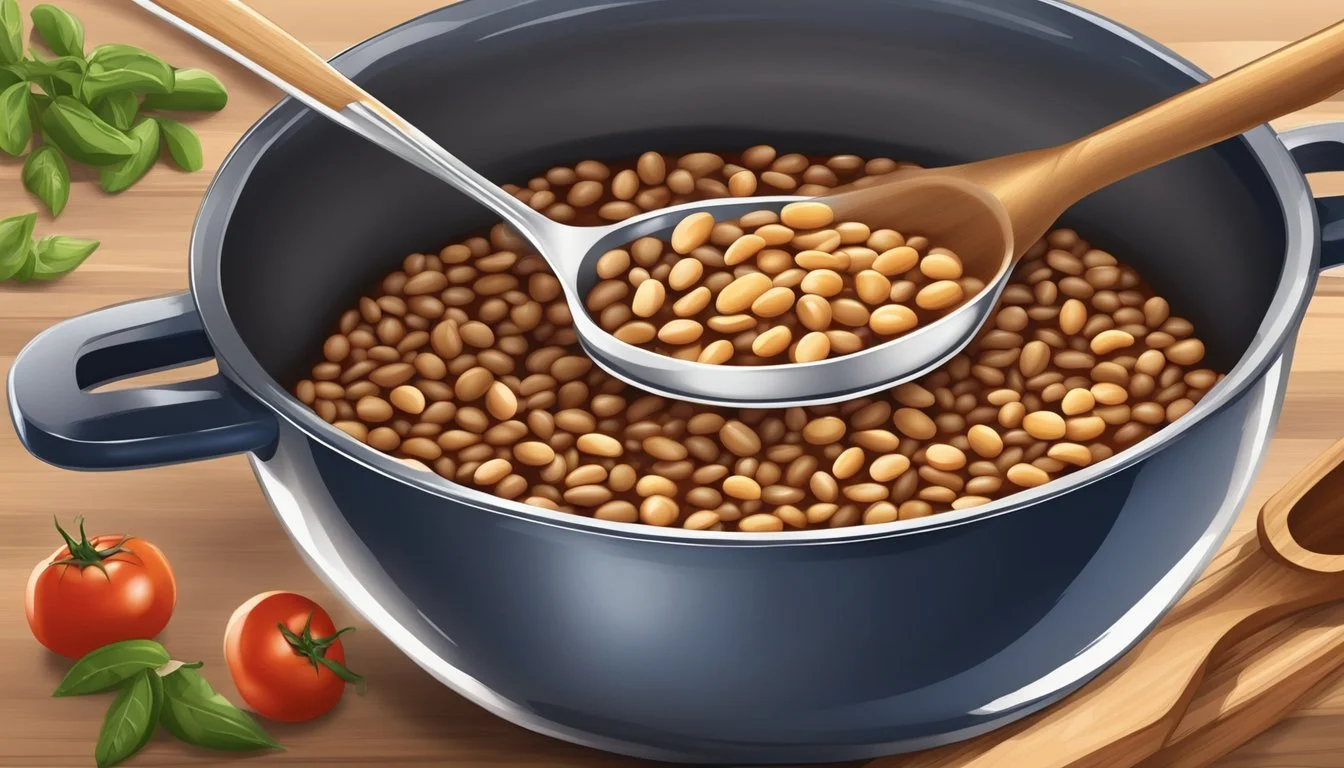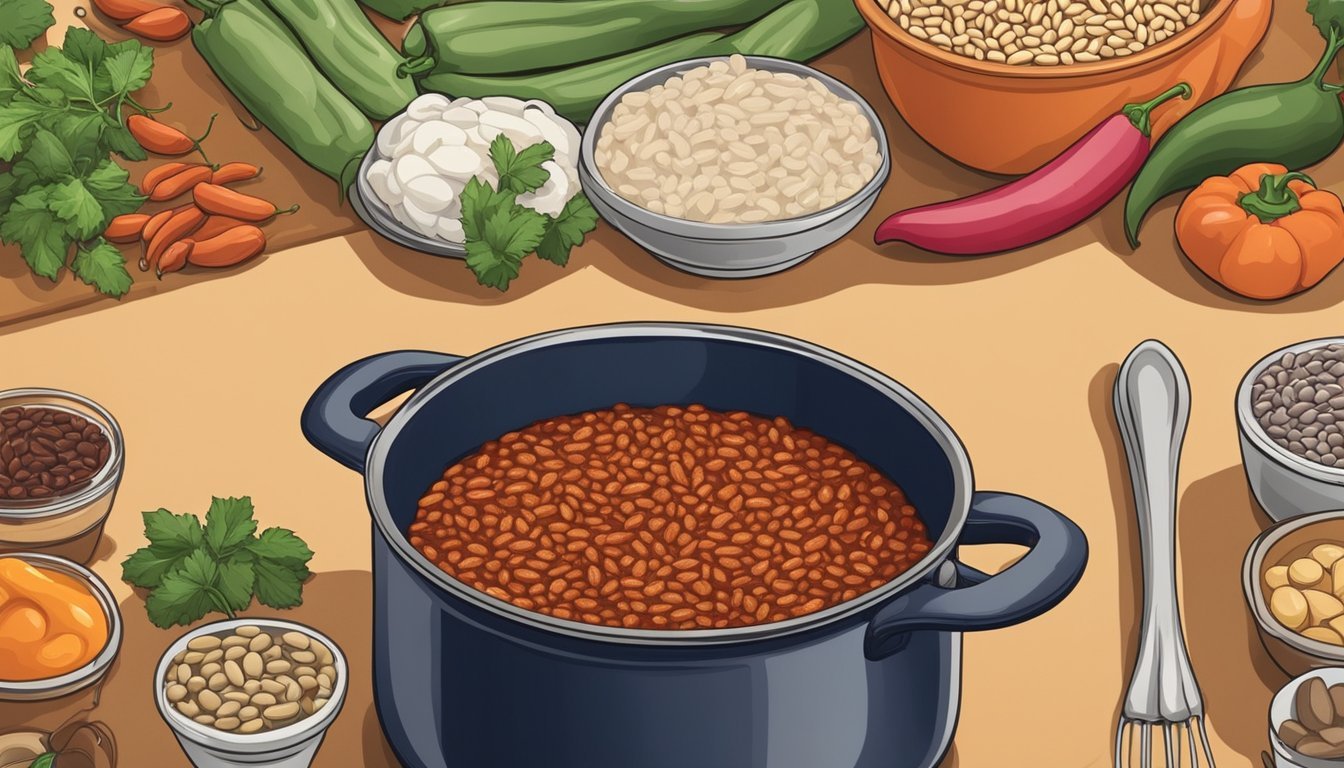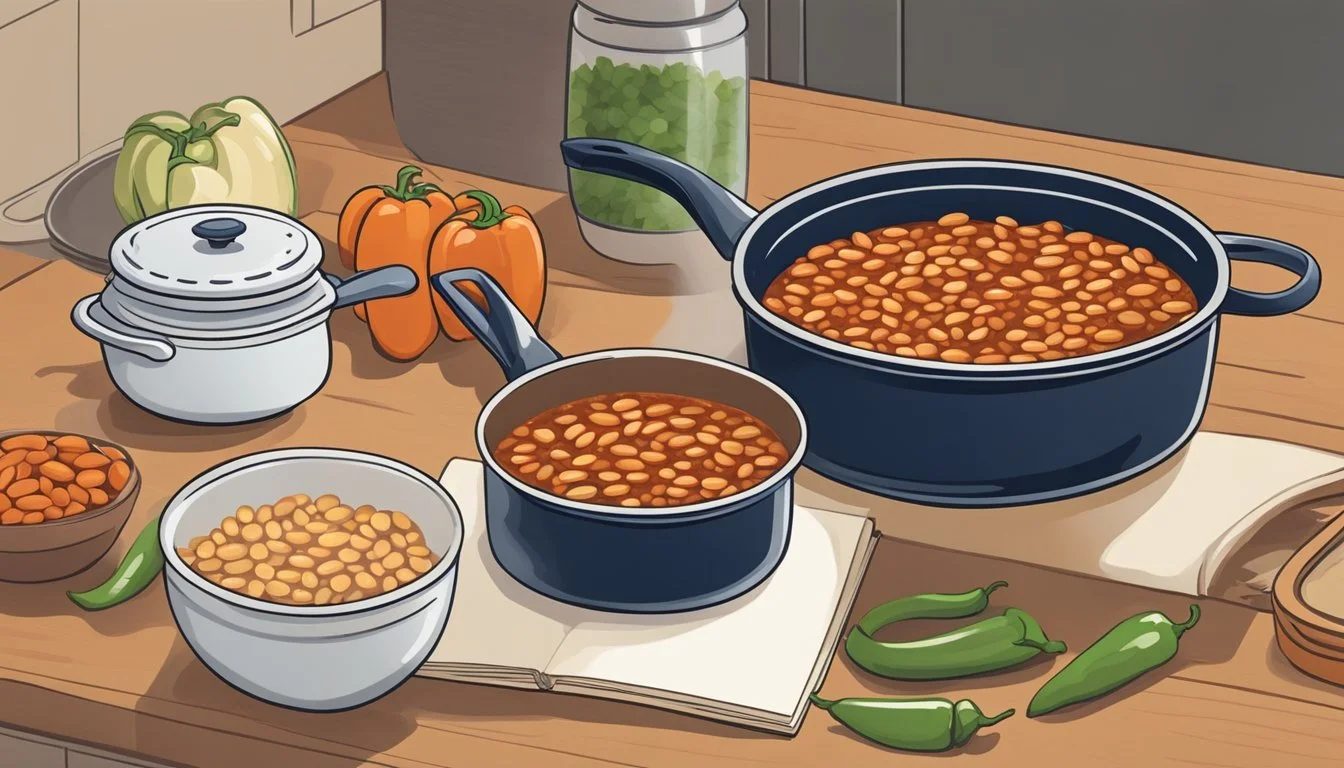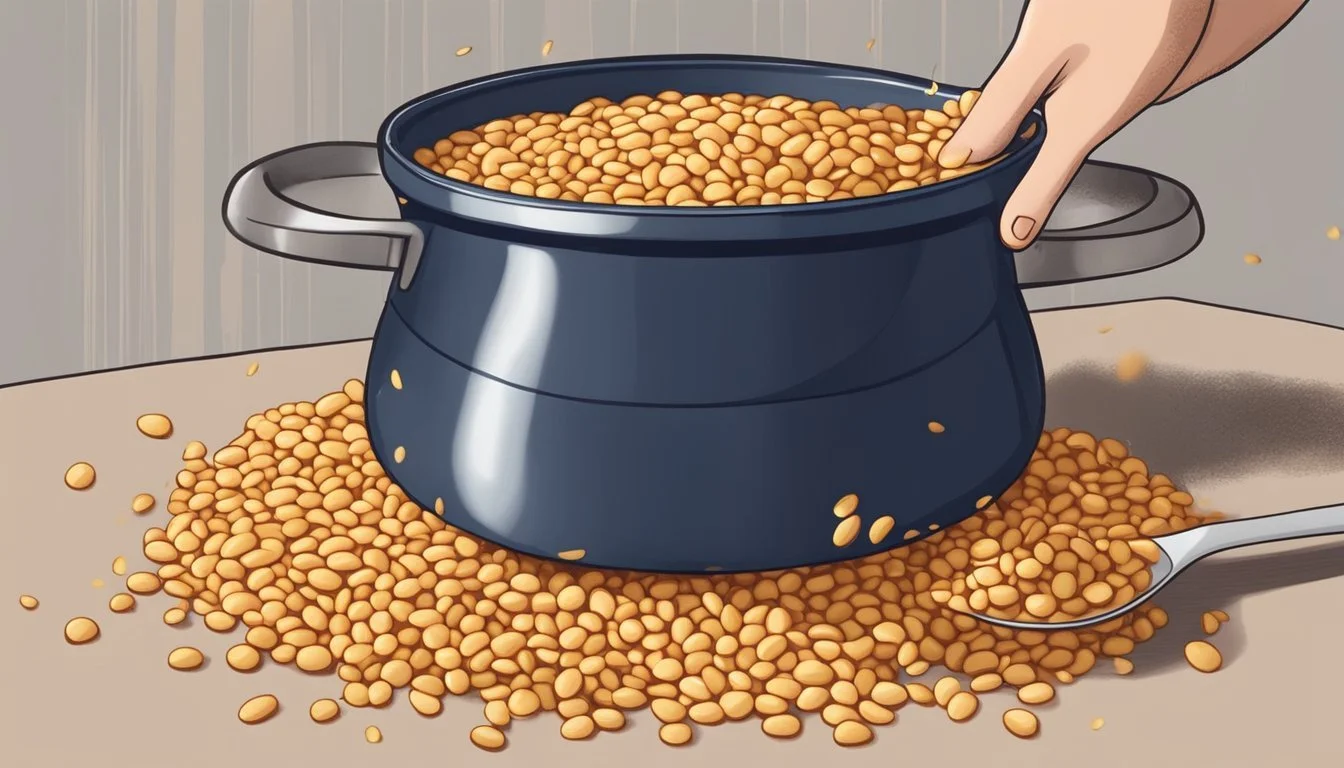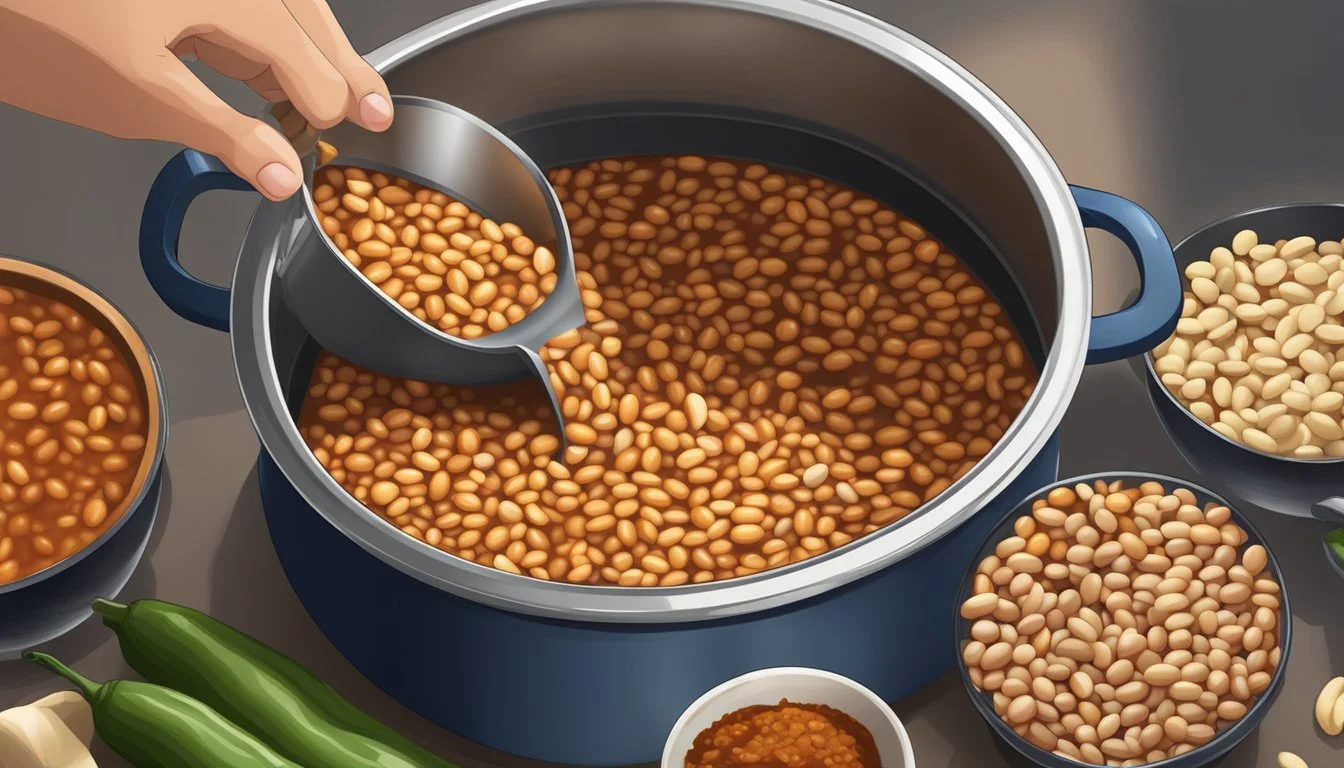How to Substitute Navy Beans for Pinto Beans in Chili
A Seamless Swap Guide
Navy beans are a versatile legume often used in a variety of dishes, including the classic chili. Substituting navy beans for pinto beans in chili recipes is a common practice that can yield delicious results. While pinto beans are traditionally favored for their earthy flavor and creamy texture, navy beans can be a suitable alternative, especially when pinto beans are not readily available or when a different taste profile is desired.
In chili, beans are a cornerstone ingredient, delivering not only a hearty texture but also a wealth of nutrients. Navy beans, with their mild flavor and soft texture, blend seamlessly into the robust and spicy components of chili. They absorb flavors well, making them an excellent canvas for the rich, savory notes of chili spices. Their smaller size and smoother consistency might alter the chili's texture slightly, but this can be beneficial for those who prefer a less chunky and more cohesive chili.
When incorporating navy beans into chili, cooking times and liquid ratios may need adjustment. Due to the firmness of cooked navy beans, they may require a slightly longer cooking time to reach the desired tenderness. It's crucial to consider this to avoid undercooked beans in the final dish. Ensuring the navy beans are thoroughly cooked will achieve a consistency comparable to the use of pinto beans, maintaining the integrity of a well-made chili.
Understanding Bean Varieties in Chili
When considering bean substitutions in chili recipes, it's crucial to know that each bean type brings its own distinct texture and flavor profile to the dish.
Characteristics of Pinto Beans
Pinto beans are a staple in many chili recipes due to their creamy texture and mild, earthy flavor. They absorb seasonings well, enhancing the overall taste of the chili. Pinto beans are smaller than kidney beans and turn soft and smooth when cooked, which contributes a comforting quality to the dish.
Protein Content: High
Fiber Content: High
Common Use: Traditional chili recipes
Properties of Navy Beans
Navy beans are small, white beans known for their mild flavor and firm texture. Compared to pinto beans, navy beans maintain their shape better during cooking and have a slightly nuttier taste. They can stand in as an alternative in chili, though they will produce a slightly different flavor profile and texture.
Protein Content: Comparable to pinto beans
Fiber Content: High
Common Use: Navy bean chili, soups
Comparing Bean Textures and Flavors
The texture and flavor of beans are significant in chili, as they can shape the dish's overall character. Here's a look at some varieties:
Kidney Beans: Firm texture, holds shape, slightly sweet
Black Beans: Small, with a dense, meaty texture, earthy flavor
Great Northern Beans: Larger than navy beans, with a soft texture, mild flavor
Cannellini Beans: Larger white beans, with a fluffy texture and a nutty, rich flavor
Comparing pinto and navy beans:
Pinto Beans are creamier and work best for a traditional chili mouthfeel.
Navy Beans are firmer, adding a denser bite to the chili.
Each legume’s unique flavor and texture should be considered when substituting to ensure the chili remains nutritious, delicious, and satisfying.
Preparing Navy Beans for Chili
When substituting pinto beans with navy beans in chili, it's crucial to properly prepare the beans to achieve the optimal flavor and texture suitable for a hearty chili dish.
Soaking and Cooking Techniques
Soaking navy beans is an essential first step in preparation. The beans should be soaked in water for at least 4-6 hours or overnight to reduce cooking time and to help achieve a uniform texture. After soaking, the beans must be drained and rinsed thoroughly to remove any impurities.
Step Time Description Soaking 4-6 hours / Overnight Soak navy beans in ample water to cover them. Rinsing After soaking Drain and rinse beans to remove impurities. Cooking Varies Boil beans in fresh water until tender.
Next, cooking soaked navy beans until they are tender typically takes about 1 to 1.5 hours. They should be brought to a boil and then simmered in a pot filled with fresh water. It's important to regularly check the beans for doneness to ensure they do not become mushy.
Achieving the Desired Creamy Texture
The creamy texture that is often expected from pinto beans in chili can be mimicked in navy beans with the right cooking technique. After the beans are fully cooked, one can slightly mash a portion of the beans before adding them to the chili. This releases their natural starches, lending a creamy consistency to the dish.
To summarize, here are key-points for texture:
Slightly Undercook: Keep a few beans less cooked to prevent the entire batch from becoming too creamy.
Mash: Mash a small portion of beans to thicken the chili.
Simmer: Allow the chili to simmer after adding beans to integrate the flavors and textures.
By carefully following these steps, navy beans can successfully be used as a substitute for pinto beans in chili without compromising on taste or texture.
Substituting Beans in Chili Recipes
When substituting navy beans for pinto beans in chili recipes, it's essential to recognize the differences in flavor and texture to ensure the end result is satisfying. This adjustment might also require slight changes in the seasoning to better complement the navy beans.
Adjusting Spices and Ingredients for Navy Beans
Navy beans are smaller and have a softer texture compared to pinto beans. They also have a milder flavor, which means they can absorb the spices in your chili nicely. When using navy beans, one might consider reducing stronger flavors that could overwhelm the beans, such as smoked paprika or cayenne pepper. Conversely, to bring out the best in navy beans, one can slightly increase aromatic spices like cumin or garlic powder. Here is a suggested spice adjustment for utilizing navy beans in your chili recipe:
Cumin: Increase by 1/4 teaspoon for a warm, earthy note.
Garlic Powder: Add an extra pinch to enhance the savory taste.
Smoked Paprika: Use sparingly to avoid dominating the beans' subtle flavor.
Cayenne Pepper: Reduce by a pinch to maintain a balanced heat level.
Other Bean Substitutes to Consider
If navy beans are not available or one is seeking variety, there are other substitutes that can be used in chili recipes. Each alternative comes with unique flavors and textures that can offer a different, yet delicious, outcome:
Cannellini Beans: Larger and firmer, add a creamy texture to the chili.
Great Northern Beans: A happy medium between navy and cannellini beans, with a mild, nutty flavor.
Kidney Beans: Sturdier and hold up well in cooking, adding a robustness to your dish.
Black Beans: Offer a distinct earthy flavor and a meaty texture, providing a striking color contrast in chili.
When substituting beans, it’s important to maintain the bean-to-liquid ratio in the recipe to ensure proper consistency. One can typically substitute an equal amount of navy beans for pinto beans by volume or weight in chili recipes.
Nutritional Considerations
When substituting navy beans for pinto beans in chili, one should consider how this switch may affect the nutritional profile of the dish, especially in terms of protein, fiber, and minerals.
Analyzing Protein and Fiber Content
Navy beans are recognized for their high protein content, often containing more protein per serving compared to pinto beans. The high-quality protein present in navy beans can be essential for muscle repair and growth. For fiber, navy beans also lead slightly, providing a substantial amount to support digestive health.
Pinto Beans: Typically lower in protein and fiber than navy beans
Navy Beans: Generally higher in protein and fiber, promoting muscle health and digestion
Caloric and Mineral Differences
Regarding calories, navy beans and pinto beans are similar, allowing for an easy substitution without greatly altering the caloric value of a chili dish. However, a shift in mineral content is noted. Navy beans provide more calcium, which is important for bone health. The iron content, which is crucial for blood health, varies slightly, with navy beans typically offering more. One should also be mindful of sodium levels, as canned varieties of both beans can be high in sodium compared to their dried counterparts.
Calories: Comparable between navy and pinto beans
Minerals:
Calcium: Navy beans have a higher content (Navy beans: 69mg, Pinto beans: 46mg)
Iron: Navy beans generally offer slightly more
Sodium: Lower in dried forms than canned varieties
By understanding these nutritional aspects, one can substitute navy beans for pinto beans while maintaining the nutritional integrity of the chili.
Recipe Adaptations for Special Diets
Making chili suitable for special diets involves substituting ingredients so they align with dietary restrictions while maintaining the deliciousness of the dish. Whether one is adhering to vegetarian, vegan, low-sodium, or low-fat diets, this section will guide through making navy beans a versatile choice for chili.
Creating Vegetarian and Vegan Chili Variants
Vegetarians and vegans can enjoy chili by using navy beans as a central protein source. For a vegetarian chili, (What wine goes well with vegetarian chili?) one might consider adding dairy products like cheese or sour cream. In contrast, a vegan chili exempts all animal products. Meat substitutes such as tofu, tempeh, or seitan offer texture and protein, while lentils and chickpeas can add variety and heartiness. Mushrooms are excellent for providing a meaty flavor without the meat. Here's a quick breakdown:
Protein Options:
Tofu: for a firm, chewy texture.
Lentils: for added heartiness, variety of types.
Mushrooms: for a meaty flavor and texture.
Additional Protein-Rich Vegetables:
Edamame
Cauliflower
Consider using soy or almond cheese as a dairy substitute that melts nicely into a rich chili.
Low-Sodium and Low-Fat Options
For individuals on low-sodium diets, it's essential to avoid canned beans with added salt. Opt for dry navy beans that are cooked at home without salt. Herbs and spices can enhance flavor without the need for sodium. In a low-fat chili recipe, omit high-fat ingredients like cheese and sour cream, or choose their low-fat counterparts. Additionally, leantowards using vegetables and lean proteins:
Vegetables: Increase the proportion of vegetables like bell peppers, onions, and tomatoes.
Lean Proteins: Include ground turkey or chicken as lower-fat alternatives to beef or pork.
By using navy beans, which are naturally low in fat and sodium, one can create a chili that is both heart-healthy and flavorful.
Serving and Topping Variations
When substituting navy beans for pinto beans in chili, it's essential to consider the serving and topping variations that can enhance the dish's flavors and textures.
Accompaniments That Complement Navy Bean Chili
For a well-rounded meal, certain sides can elevate navy bean chili. Hearty vegetables such as corn or diced potatoes pair well, adding a pleasant contrast to the chili's texture. A side of rice, plain or seasoned, can absorb the flavors and make the meal more filling. For an aromatic touch, one might add garlic bread or freshly chopped onions to the table, as both provide a flavorful burst that complements the chili.
Vegetables: Corn, Potatoes
Grains: Rice
Aromatics: Garlic bread, Fresh onions
Creative Topping Selections
The right toppings can turn a simple navy bean chili into a customized flavor experience. Classic toppings like shredded cheese and sour cream offer a creamy dimension, while fresh lime juice can add a zesty kick. For those seeking texture, chopped onions or crispy tortilla strips can provide a satisfying crunch. Don't forget a sprinkle of chopped cilantro for a fresh herbal note and sliced avocado for richness.
Creamy: Shredded cheese, Sour cream
Fresh: Lime wedges, Chopped cilantro, Diced onions
Crunchy: Tortilla strips
Rich: Avocado slices
Cooking Tips and Techniques
When substituting navy beans for pinto beans in chili, understanding prep and cook times, along with other expert tips, ensures a flavorful and satisfying dish.
Managing Prep and Cook Times
Chili recipes often involve simmering beans for extended periods, allowing flavors to meld. Navy beans, similar in size to pinto beans, can follow the same prep time and cook time. Typically, one should allocate approximately 10-15 minutes for prep time, which includes rinsing the beans and preparing other ingredients. As for cook time, navy beans should simmer in chili for about 1-2 hours. Here's a simple breakdown of time management:
Prep Time: 10-15 minutes
Cook Time: 1-2 hours
Total Time: 1 hour and 10 minutes to 2 hours and 15 minutes
Cook times can vary based on whether one opts for canned or dried beans, as canned beans reduce the total time significantly.
Expert Tips for Best Results
To ensure navy beans integrate well into chili recipes as a pinto bean substitute, one should heed the following expert advice:
Rinse the Beans: Whether using canned or dried navy beans, rinsing them helps to remove excess sodium and improve texture.
Pre-Soak Dried Beans: If using dried navy beans, soaking them overnight reduces cook time and makes them easier to digest.
Seasoning Adjustment: Navy beans have a mild flavor, so chefs may need to adjust spices and seasonings in the chili to accommodate the taste difference from pinto beans.
Consistency Check: Stir the chili occasionally and check for doneness starting at the 1-hour mark. Navy beans should be tender but not mushy.
It is essential to taste the chili throughout the cooking process and adjust seasonings as needed for the desired flavor profile.
Conclusion
Substituting navy beans for pinto beans in a chili recipe can be done with confidence. Navy beans are a versatile and suitable pinto beans substitute, particularly in chili, due to their similar size and texture. They perform well in various dishes, including soups and salads, adding nutritional value and a pleasing texture to meals.
Key points to remember when replacing pinto beans with navy beans in chili:
Texture and Flavor: Navy beans have a mild flavor and soft texture, making them an excellent alternative in chilis where pinto beans are traditionally used.
Cooking Time: Both beans have comparable cooking times, ensuring that substituting one for the other won't affect the overall cooking duration of the dish.
Versatility: Like pinto beans, navy beans can be utilized beyond chili recipes—they shine equally in a range of legumes-based dishes.
To summarize, one can confidently swap in navy beans for pinto beans in their chili without compromising the dish's integrity. This substitution does not significantly alter the taste profile or consistency of the chili, and it maintains the expected dining experience. Whether for preference or necessity, the change is seamless, affirming that navy beans are a reliable stand-in within the legume family for pinto beans.

